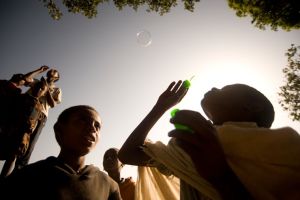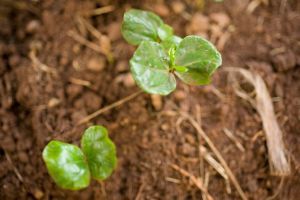 It’s been two months since global officials have officially deemed the famine in the Horn of Africa as the worst to hit the world in a century. During those same two months, I’ve released Coffee Story: Ethiopia and have been speaking to audiences about a broader landscape of possibility in Ethiopia that includes coffee. Coffee Story is the result of five years of work, during which time I never imagined the book would be released to this crisis. But now, eight weeks into speaking, writing, and thinking about the reality of the Ethiopia situation—one with massive problems, massive potential, and massive changes happening daily, I can tell you that this dialog might just have been what this book was made from since the beginning.
It’s been two months since global officials have officially deemed the famine in the Horn of Africa as the worst to hit the world in a century. During those same two months, I’ve released Coffee Story: Ethiopia and have been speaking to audiences about a broader landscape of possibility in Ethiopia that includes coffee. Coffee Story is the result of five years of work, during which time I never imagined the book would be released to this crisis. But now, eight weeks into speaking, writing, and thinking about the reality of the Ethiopia situation—one with massive problems, massive potential, and massive changes happening daily, I can tell you that this dialog might just have been what this book was made from since the beginning.
Jonathan Ledgard, the Africa correspondent for The Economist magazine, released an article on September 5th that asked how much further we’d come as a global society since the famine of the 1980’s. He interviewed me for the piece, and what follows are my extended answers about the response to the famine, the pattern of media, and patience.
JL Question: How has the media/politicians/UN/NGO’s responded to the famine? Are they exacerbating the situation? Why the need for exaggeration? Do the television images support fundraising or undermine it?

Coffee Seedlings, Amaro Mountains, Ethiopia. By Travis Horn
MB Answer: I believe that we (the media and the global public) are patterned in our responses to the Horn of Africa famine as a result of the collective media fatigue leftover from the 1980’s. Therefore we are not seeing these images with fresh eyes, but rather with exhausted eyes. The details are very real and very important, but rather than help the situation I would argue they make it worse by playing the same note of devastation that no one really wants to keep hearing. The images of starving and dead women and children are easy to come by and are accurate renditions of the famine, but who really wants to see another one? This might seem very crass but it is meant to be very honest. What would happen if an image of a lush coffee forest was flashed on the screen instead? Of a lake? Of a healthcare facility that is working? Of an eye health initiative where 1,000 people are cured from blindness in one week? I don’t think any of these would take away from the famine but they might just allow hope to come into the conversation and thus inspire action instead of further deaden the response.
Much of the current media exaggerates the situation by claiming that the entire Horn of Africa is starving. This rallying cry is meant to make us all pay attention, but I think it makes us want to look away. How can you help the entire Horn, after all, and haven’t we been trying for years? (more on this intentionally tongue in cheek comment in my next blog). We could push this line of reasoning and say that humans should be able to take a great deal of bad news and still care and still act. We should have that patience. But I don’t know if we really do, or if we really should. In the past five years I’ve given over sixty lectures around North America about Ethiopia. People hang onto the good I share and not in a naive way, but in a way that makes them more motivated to pay attention to the bad. In short, I think we can understand more complicated reporting that shows both.
—
The conversation is continuing; it needs to. Please join it.
- Read Ledgard’s piece in the Economist.com.
- Want to get involved? Several people at my recent speech at Town Hall Seattle asked for a list of organizations doing compelling and sustainable work in the Horn right now. Here is a start:
- Himalayan Cataract Project: Working to reach the greatest number of unserved blind people, with the highest quality care, at the lowest possible cost. Leaders in Ethiopian eye care intervention.
- Fistula Foundation: Working to raise awareness and funding for fistula treatment, prevention and educational programs worldwide.
- Imagine1day: Working to ensure that all Ethiopians have access to quality education funded free of foreign aid by 2030.

